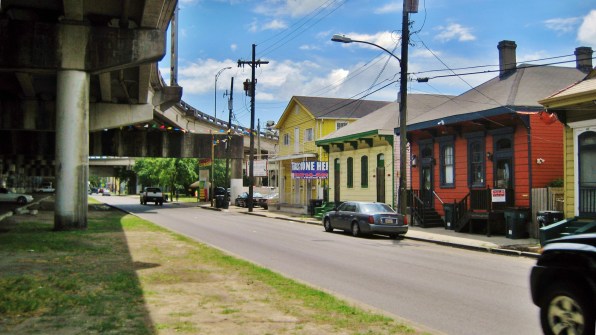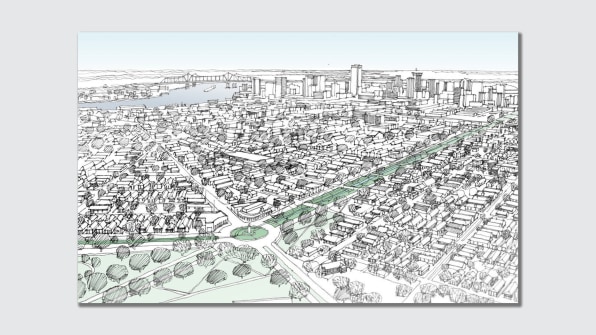Removing urban highways could transform cities and help heal a legacy of racist planning. But it won’t be possible without help from the federal government.

When a new elevated highway was built in New Orleans in the 1960s, like other “urban renewal” projects in the U.S., it ripped through a predominantly Black neighborhood that had been thriving. Hundreds of homes were razed. Hundreds of businesses were lost. On Claiborne Avenue, the central boulevard in the neighborhood, hundreds of oak trees were torn out of a wide median that neighbors had used as a park. A coalition of community members now want to take the aging highway down—and it’s the type of project that the new administration could help make possible.
“There was a lot of disinvestment after buildings fell into disrepair. We lost a lot of historic building stock in terms of homes and commercial buildings,” says Amy Stelly, a designer and planner whose family has lived in the community for generations and who is now part of Claiborne Avenue Alliance, the group pushing to restore the former boulevard. “And it also changed the climate, because we now have cars instead of trees.” The now-missing park in the center of the avenue had mitigated the urban heat island, the effect that makes concrete-filled neighborhoods hotter on hot days. The greenery had also helped absorb rainwater in storms. As the new highway physically divided the area and destroyed the neighborhood’s economy, it also added pollution: People living nearby have a higher risk of asthma and other diseases.

In Rochester, New York, for example, an “inner loop” highway had less traffic than a typical city street; the highway is now being removed, opening up land that can be used to build housing and new businesses. The city worked with the community living next to the highway to create a new vision for the area, and then gave developers requirements such as building affordable housing to help avoid forcing residents out of the neighborhood as property values increase. Crowther says that it’s critical for cities to have antidisplacement strategies in place before a highway comes down and a neighborhood suddenly becomes a desirable place to live again.
The federal government helped pay for the highways built through American cities in the middle of the 20th century. Now, federal policy could help transform those neighborhoods again, this time with a focus on equity and the environment. “Since it’s a product of the federal government, I think there’s also an imperative that the federal government takes a look at how we can repair some of the damage it could cause,” Crowther says.

Funding for construction is critical. In New Orleans, where COVID-19 has devastated the tourism-based economy, Stelly says that without federal support it’s unlikely that the highway can be removed and her neighborhood rebuilt. But it’s an issue that the incoming administration has said that it wants to prioritize, including the soon-to-be transportation secretary Pete Buttigieg. And it’s an idea that could get bipartisan support in Congress. “It is a fiscally responsible way to create more local wealth and have communities that invest in themselves and become more self-sustaining,” says Freed. “So it is the type of policy that we would hope lowercase-c conservatives, as well as folks on the central left and more progressives, could all get behind.”
"want" - Google News
January 06, 2021 at 07:00PM
https://ift.tt/38hbPw2
Cities want to tear down these urban highways—and Biden can help - Fast Company
"want" - Google News
https://ift.tt/31yeVa2
https://ift.tt/2YsHiXz
Bagikan Berita Ini















0 Response to "Cities want to tear down these urban highways—and Biden can help - Fast Company"
Post a Comment